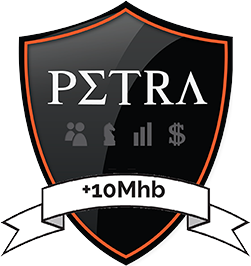To grow personally and professionally, business leaders must seek input from others and create a plan to eliminate blind spots
This article originally appeared in BOSS Magazine.
One of the biggest challenges leaders face in their personal and professional development is identifying blind spots, the unseen obstacles that hold them back from achieving their full potential.
Many leaders, unfortunately, don’t take the time to find out of they do have blind spots. Research by Zenger/Folkman found that 30% of leaders had at least one fatal flaw—a blind spot in other words—that they did not know about.
Finding and fixing blind spots isn’t for the faint of heart. It takes a lot of effort, courage, and discipline to identify them and course-correct. But going through the process will help you and your business to keep moving forward. Here are four tips to guide you:
1. Look Into the Mirror
The first step in the process is to conduct a self-assessment and inventory of your known strengths and weaknesses. Block out time on your calendar and don’t allow interruptions. Force yourself to answer tough questions about your abilities and limitations. And this is not the time to be humble or shy, or to be guarded. Get honest with yourself. Then write down the answers so you have a better understanding of why you are succeeding and why you are falling short—and what steps you need to take to improve. The inventory you create during the self-assessment will be incredibly helpful when you compare it to information collected from other sources (see steps two and three).
2. Gain Insight From Personality Tests
Standardized personality tests are another tool to help uncover blind spots. Wiley’s DiSC and the Myers-Briggs Type Indicator are two popular tests that provide insight into your leadership style. Most of these assessments are based on the “Big 5” personality traits: agreeableness, conscientiousness, extraversion, neuroticism, and openness. The tests—when compared to your own self-assessment—can shed more light on your tendencies and preferences in communication, decision-making, and problem-solving.
3. Seek Input From Others About Your Blind Spots
This is where the process gets tough, but it’s also the most important step to take. Ask several members of your team and peers that you know well at other companies to list your strengths, weaknesses, and blind spots. Ask them to recommend ways that you can improve. Sure, this will probably be an uncomfortable exercise, but it’s the only way to get an accurate picture of what you need to fix. If you are unsure that team members and peers will share their true feelings (because who wants to come across as being critical of the boss or a friend?), then use online tools like Google Sheets or Survey Monkey to obtain anonymous feedback.
4. Create a Plan and Act On It
The most effective personal and professional development initiatives include a written plan that includes the information collected in steps 1-2-3 and identifies tasks to be completed and milestones to be achieved. It’s your blueprint for success and will keep you on track to achieve your goals. Make sure every goal is S.M.A.R.T. (specific, measurable, attainable, relevant, and time-bound) and that tasks and milestones are reviewed on a weekly, monthly, and quarterly basis so you can quantify your progress.
Basketball (and business) superstar Michael Jordan once said, “If you push me toward something that you think is a weakness, then I will turn that perceived weakness into a strength.” Follow these four tips and you can turn your blind spots into strengths that will enrich your personal life and help you grow your business.




